Art Fairs
Surrealist Renate Druks, Visionary Painter of Cats and Muse to Anaïs Nin, Gets a Welcome Spotlight at the Independent Art Fair
Meet art history's ultimate cat lady.
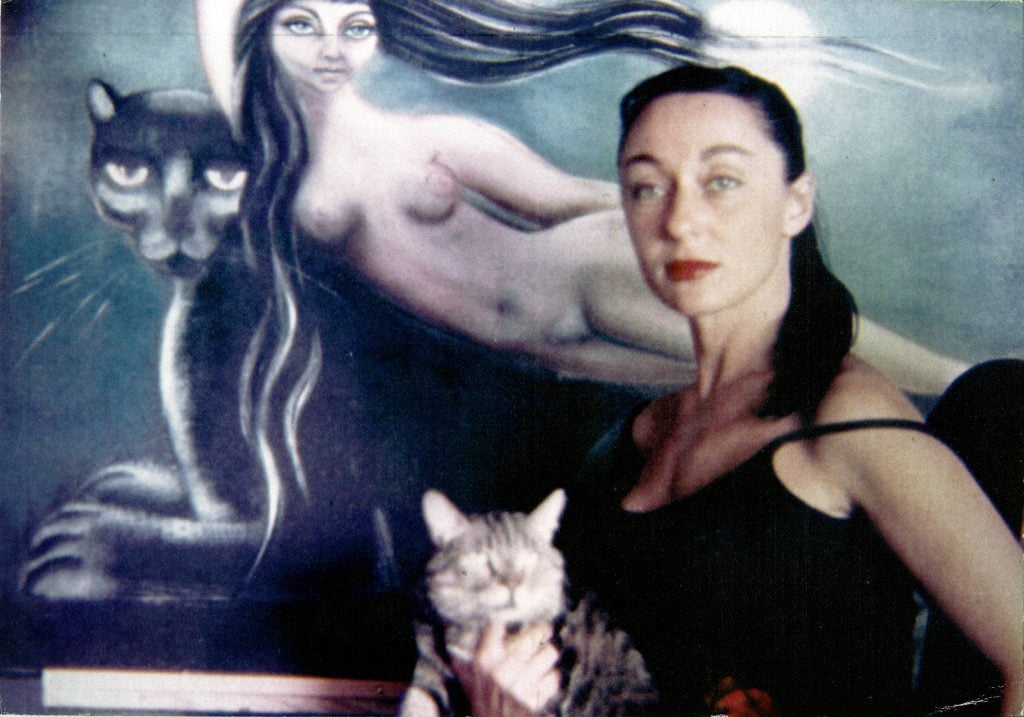
Meet art history's ultimate cat lady.

Katie White

Cats with wide, mesmeric eyes stare out from canvases. Beside them, women recline languorously in states of undress.
These are the peculiar, bewitching visions of Renate Druks, an obscure Viennese artist who lived in and worked in Los Angeles during the middle of the last century. During her lifetime, Druks was an intimate friend of the writer Anaïs Nin, painter Marjorie Cameron, and filmmaker Kenneth Anger, and was better known as a creative muse than for her own work.
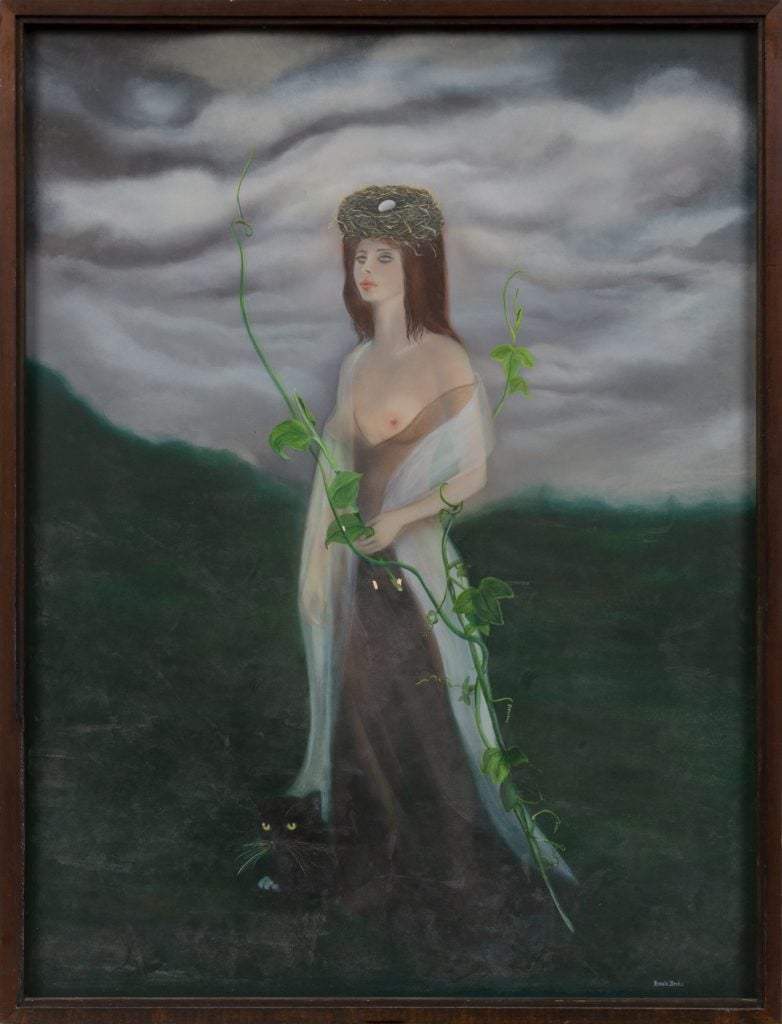
Renate Druks, Spring Fever (1979). Courtesy of the Ranch, Montauk.
But Druks’s marvelously odd creations may soon be earning accolades all their own. This weekend, in a booth at the Independent Art Fair, the Montauk art venue the Ranch will bring Druks’s paintings to new eyes.
Ranch owner Max Levai first became familiar with the artist’s works through Lisa Janssen, a filmmaker who was researching the work of Kenneth Anger, and is now working on a biography of Druks.
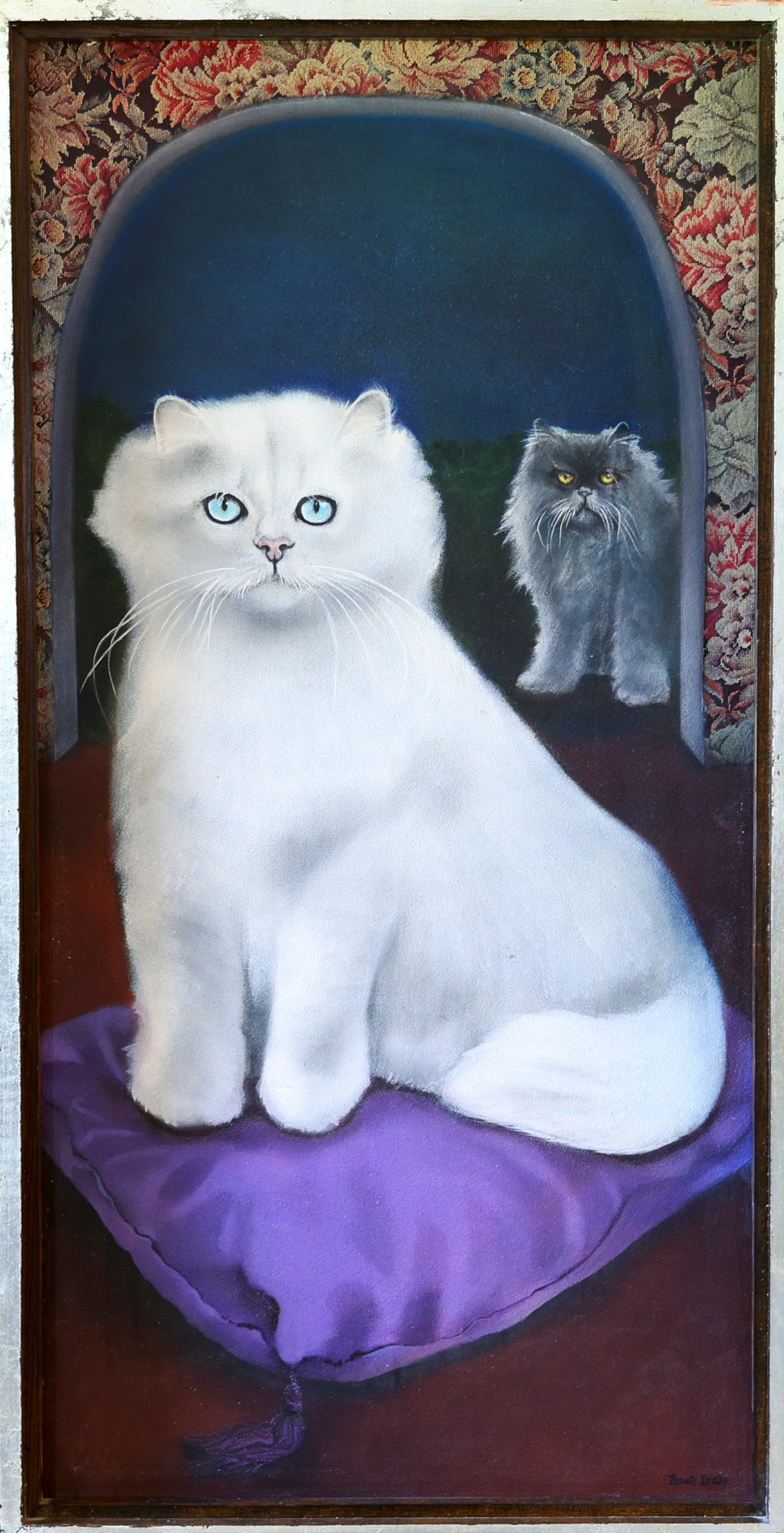
Renate Druks, White Female and Grey Male (1979). Courtesy of the Ranch, Montauk.
“Renate Druks’s artistic production continuously cropped up in Janssen’s research on Kenneth Anger and his counterculture film circle in Los Angeles,” said Levai, who first exhibited works by Druks at the Ranch last year. He believes her life story and her work are an important missing link in art history.
Born in Vienna in 1921, Druks studied at the Vienna Art Academy for Women. By 1938, Druks, who was Jewish, fled Austria with her American husband, arriving soon after in Los Angeles. Druks immersed herself in an experimental art scene in Los Angeles and lived for three years in Mexico, where she devoted herself to developing her own idiosyncratic style.
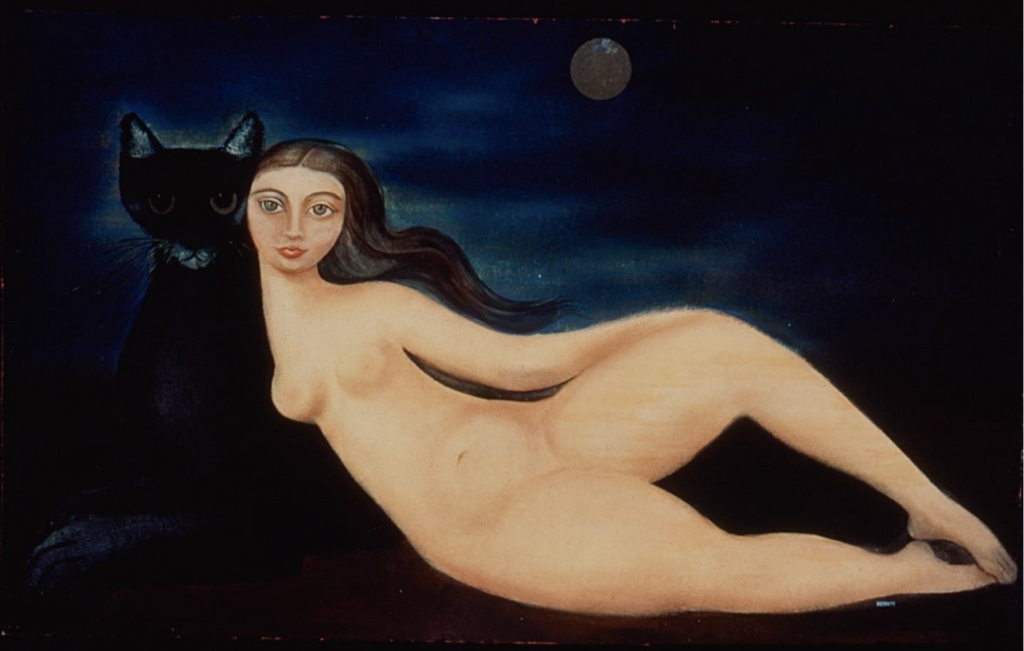
Renate Druks, Beauty and Beast (1953). Courtesy of the Ranch, Montauk.
In Malibu, Druks became famous for hosting outlandish costume parties. One such masquerade ball, called “Come as Your Madness,” became the inspiration for Anger’s short 1954 film “Inauguration of the Pleasure Dome,” in which Druks would appear. In 1957, she debuted her first major solo show at the Lane Galleries in Westwood, California, which opened to critical accolades.
Over the decades, Druks’s home became a nexus where artists, writers, and actors gathered. She directed several of her own films, including A Painter’s Journal. Her paintings today feel strangely prescient, often exploring ideas of the tarot and mysticism. Druks was also a lover of cats—and many of the paintings on view at the fair are of her cats, in groups or alone, and they offer a fitting introduction to the artist’s remarkable five-decade-long body of work. (In the tarot, cats are regarded as the keeper of secrets.)
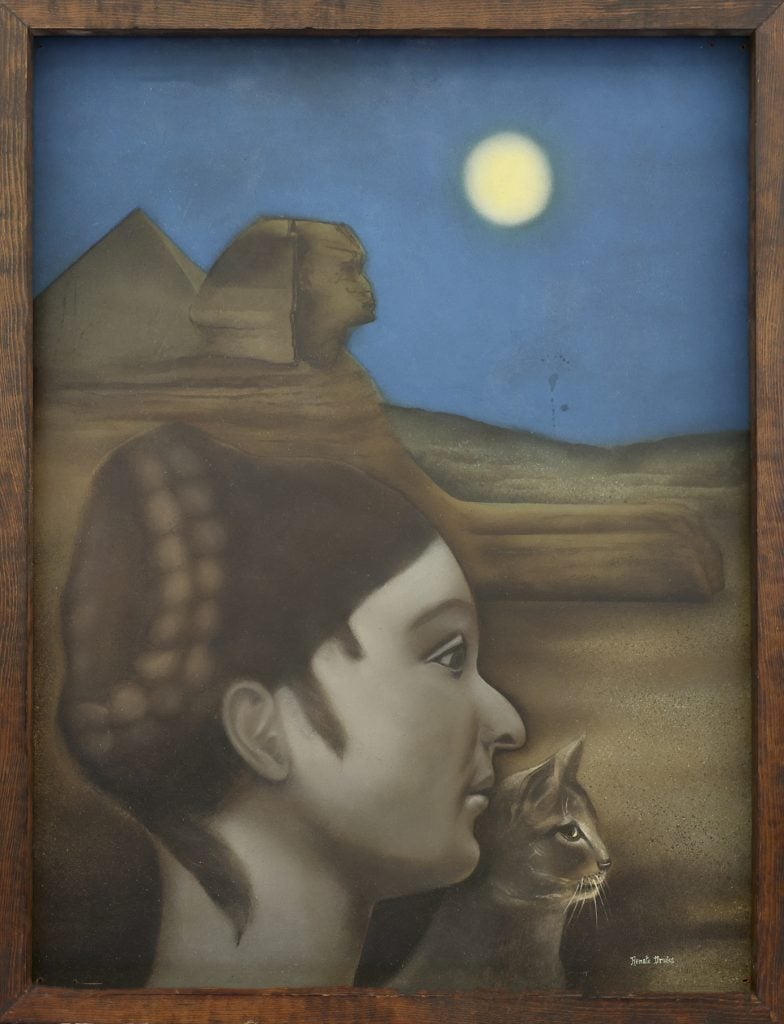
Renate Druks, Cleopatra (1970–71). Courtesy of the Ranch, Montauk.
What secrets do Druks’s paintings have yet to divulge? “Druks developed an entirely underexamined visual world,” said Levai. “The connections of her paintings to a Surrealist diaspora spun in Mexico and the United States by women was undeniable: her seductresses, cats, theater references, and occult symbology reveal a critical extension of Surrealism and presage a feminist art history—surfacing like a missing link between Leonora Carrington and Leonor Fini.”